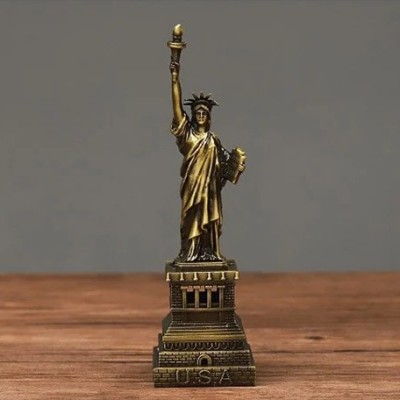
reactormag.com
Moby-Dick Turned Upside Down: Patrick Ness’ And the Ocean Was Our Sky
Books
SFF Bestiary
Moby-Dick Turned Upside Down: Patrick Ness’ And the Ocean Was Our Sky
An experimental SF retelling from whale’s point of view…
By Judith Tarr
|
Published on September 8, 2025
Comment
0
Share New
Share
Herman Melville’s famous novel has been inspiring other authors’ works for well over a century now. It’s about to have another moment in February with Alexis Hall’s Hell’s Heart. While I wait for that, I’ve happened across one from 2018 that comes at the original story from an unusual angle: Patrick Ness’ And the Ocean Was Our Sky, with powerful and evocative illustrations by Australian artist Rovina Cai.
I had hoped to find a version from the whale’s point of view, and Ness does that, though he takes a somewhat different slant. His genderbends it, for one thing. His narrator is a whale, and she’s female; she bids us call her Bathsheba. It’s not too distant a parallel with Melville’s Ishmael.
Buy the Book
And the Ocean Was Our Sky
Patrick Ness
Buy Book
And the Ocean Was Our Sky
Patrick Ness
Buy this book from:
AmazonBarnes and NobleiBooksIndieBoundTarget
This is an interesting book, on multiple levels. As a Harper Teen release, it ticks the “Young Adult” box with its young protagonist and its theme of discovery and redemption. It turns the whole world on its head, literally: for the whales of this world, the ocean’s depths are the sky, and the Abyss is the ocean’s surface. Whales go “up” to the darkness of the deepest sea, and “down” to the air.
These are not whales of our Earth. They have a sense of smell, which our cetaceans do not—it’s one of the things that got lost in the transition from land to water. Their females can grow huge, whereas Earth’s sperm whale females are half the size of the males. Whales of both sexes have almost totally dispensed with the need to surface for air. They able to stay underwater for long periods thanks to bubbles of air that they carry in their throats.
And, most different of all, whales fight back against human hunters in a direct and immediate way. They have ships, which are attached by harnesses to their huge captains. They have a hierarchy in the crew, with three young Apprentices to the captain, and sailors who are a different, much smaller species of whale. Their civilians live in cities in the deepest part of the sea. The whales with the ships are hunters, defending their people from the great enemy below, the humans.
This is all-out war. Humans hunt whales in the manner of our own world, and whales hunt humans in the same way: whaling ships, harpoons, harvesting of the enemy species. Whales harvest humans exactly the same way humans harvest whales.
Their enmity is absolute. Both sides set out to eradicate the other. There’s no common ground. No meeting of minds. No diplomacy. Just slaughter.
Bathsheba’s tale brings it all to a head. The key and the catalyst is the mythical, legendary, possible or impossible, real or unreal Toby Wick (related to John, perhaps?). Alexandra, the captain and her eponymous ship, pursues him as Melville’s Ahab does, and she has a disability as well, a kind of mashup of the harpoons lodged in Moby Dick’s side and Ahab’s lost leg: a harpoon in the head, right in the center of the organ that controls echolocation.
Bathsheba, like Ishmael, makes contact with a representative of a culture completely alien to hers, but her case is far more traumatic than Ishmael’s very physical friendship with Queequeg. Her window into a different world is a human captive. As the most junior member of the command crew, she is forced to look after him, and it’s a harrowing task.
She has to interact with the great enemy, and as she does, her feelings change in disturbing ways. She starts to see the enemy as a fellow being. In the terms of our world, she humanizes him—or should I say, whale-izes him.
Who and what Toby Wick is, is key to the resolution of the story. The debt to Melville is considerable, both in the plotting and in the significance of the legendary monster with his great white hull. The ending is a tragedy but it leads to triumph, which takes it past the ending of Melville’s novel.
There’s a whole lot of handwavium going on in both the plot and the worldbuilding, and a whiplash-level about-face that as a reader/writer/editor I was not buying, though it’s meant to be heartwarming and inspiring and all of that. Ness’ whales are deeply spiritual and strongly fatalistic. They’re very much children of prophecy. Bathsheba herself is a fated hero, a reluctant hunter, but bound to it by the forces of destiny.
It’s a classic fantasy trope. Melville plays on it with both Ishmael and Ahab, but Ness’ whales take it literally. It’s baked into their culture.
That culture is built on scavenging from humans. The whales’ ships are repurposed human ships. Their technology is human: harpoons, sails (that catch the ocean currents), harnesses that attach the ships to the huge captains. Their catch is processed the same way humans process whales.
Even the names are human, though whales have their own language. There’s more of a sense here of talking animals than actual whales. They’re a mirror held up to humans: a reflection of human flaws and failings.
As an SFF reader and writer, I have questions. How are whales building ships with scavenged parts? They don’t have hands. Their small, barely acknowledged sailors don’t, either. How do they construct their harpoons?
What about the harnesses? Who or what makes them? And how do they get into them? How are they fastened?
I feel as if there’s a piece missing here. Something with fine manipulative capability. If it were me, I’d look at octopuses, enlisted as allies and enrolled as artisans and builders.
But that’s not what this book is about. It’s a thought experiment. It addresses the issue and the morality of total war, along with the power of belief and the concept of destiny. Its worldbuilding serves the concept and the theme. It’s not concerned with fine details.
It is well written, and Kai’s greyscale illustrations are a beautiful complement to the prose. My brain had to turn itself inside out for a bit before it could wrap itself around the upside-down-ness of it all. I appreciated the chance to stretch my consciousness.[end-mark]
The post <i>Moby-Dick</i> Turned Upside Down: Patrick Ness’ <i>And the Ocean Was Our Sky</i> appeared first on Reactor.










